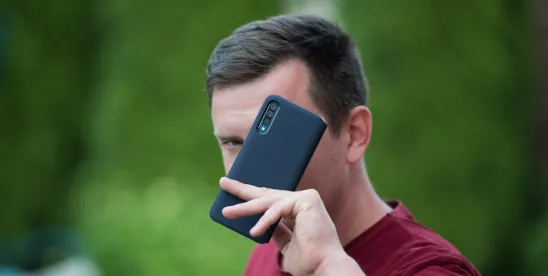As TCPAWorld reported a while back, the Department of Justice is now pursuing quasi-criminal injunctive relief proceedings against U.S. based phone carriers that are allegedly serving as gateways for fraudulent robocall traffic. This is a new tactic in the ongoing war on fraudulent robocalls in this nation, and one that treats phone carriers as potential aiders and abettors of fraudulent traffic on their networks—a real departure from the traditional immunity enjoyed by so-called common carriers. Indeed, for decades phone carriers were prohibited from making assessments about the desirability of calls under federal law. Well, no more.
In United States v. Palumbo, 20-cv-0473 (EK) (RLM), 2020 U.S. Dist. LEXIS 61466 (E.D.N.Y. March 24, 2020) a federal district court issued a preliminary injunction against so-called intermediary carriers TollFreeDeals and SIP Retail requiring, in essence, that these companies cease operations because they are “key participants in a large, ongoing telecommunications fraud.” And depending on your point of view this is either an excellent win in the fight against scam calls, or an order that throws the baby out with the bath water and threatens to shut down small legitimate carriers based upon third-party reports of potentially fraudulent calls traversing their networks.
Hold onto your hats folks, this one is cutting edge and just fascinating.
Defendants in Palumbo are/were phone carriers that carry telecommunications traffic and sell return phone numbers (so called DIDs) to customers in exchange for a fee. In a vacuum, this conduct is no different than what numerous (all?) other phone carriers do across the nation. The problem for these Defendants, however, is that the folks using their networks and phone numbers were engaging in highly-illegal conduct—scam robocalls.
Although the Court carefully catalogs evidence of the Defendants (conscious?) acts in furtherance of the fraud of these third-parties, objectively it doesn’t look like much more than mere awareness of potential misconduct. In the post-trace back world, phone carriers often receive “tickets” from the US Telecom group asserting that US phone carriers received a complaint about traffic over a carrier’s network (so-called “traceback” efforts.) It is unclear who, if anyone, oversees US Telecom’s efforts, or whether their notifications are always reliable as this process is relatively new. Nonetheless, the Court in Palumbo appears to credit these reports as presumptively valid—at least for purposes of establishing the carriers’ awareness of fraudulent traffic on their networks— and carefully cataloged the number of notifications that US Telecom delivered to the Defendant carriers as evidence that the carriers must have known bad actors were using their networks.
Ok.
The Court also considered the Defendants’ supplying local call back numbers to callers to be a critical part of the “scam”—calling these numbers “spoofed.” Notably, however, these numbers were actually valid return phone numbers and not false numbers, so it is unclear that any spoofing was actually taking place. (Spoofing is generally thought of as when a caller fraudulently uses a working number that is not assigned to them—if you call it back, you either reach the real owner of the number (who has no idea why you are calling) or you get no answer at all (disconnected etc). That is not what the Defendants in Palumbo were alleged to be enabling, however. There were supplying real phone numbers that really were assigned to the caller.) Nonetheless, the mere fact that the Defendants were supplying valid local phone numbers to callers that turned out to be bad actors was sufficient to trigger a finding that the Defendants were willing participants in a fraud.
Pause.
Consider the government’s showing here. The Defendants: i) were informed by third-parties of potential scam calls traversing their networks; and ii) sold valid working phone numbers to companies that turned out to be scammers.
But is that really all it takes to be labeled a participant in a telephone fraud ring (a crime that carries twenty years in prison)?
To be sure, the conduct of the callers here is terrible. These are fraudulent scam calls of the worst variety and the guys making those calls should be in jail. But the Court in Palumbo does not appear to set forth any articulable standard as to when a carrier crosses the line and becomes a participant in that scam rather than just another victim of the third-party callers’ wrong doing. And that’s a potential problem for any legitimate carrier that wants to stay out of harm’s way.
For instance, is a carrier now always responsible for vetting potential customers before allowing them to use their services? If so, what does that vetting entail? And when, if at all, does a failure to vet or cut off a carrier’s users go from merely ill-advised or reckless to an outright act of affirmative participation in a fraud?
These are tough questions and Palumbo does not give any solid answers beyond this rather ephemeral finding: “Defendants’ failure to take meaningful action in response to these complaints demonstrates reckless indifference to the fraud they were enabling. Over time, it became increasingly clear that they knew or should have known the complaints evidenced a widespread pattern of fraudulent calls being transmitted over their network.”
But what were the “meaningful actions” the carriers were required to take? And how much “time” must pass before it is “clear” that a carrier knew of a “widespread pattern” of “fraudulent calls” that the law requires them to do something about? And is “reckless indifference” really all that is required to be deemed a potential participant in a fraud ring?
Again, the predicate conduct underlying the Court’s injunction here is a serious crime—wire fraud—carrying up to twenty years in prison. That is not the sort of thing any carrier would want to be mistakenly found to be a “participant” in. So carriers really need to know where the new lines are.
Diving a bit deeper, the Palumbo opinion shows that the Court relied on additional unusual evidence to declare the carrier Defendants participants in a fraud ring—in addition to the US Telecom “tickets” the Court relied on information from call blocking apps Nomorobo and YouMail. It is difficult to imagine how these third-party call blocking apps—whose data is highly-subject to interpretation— would have admissible evidence on the state of mind of phone carrier operators and the quality of traffic on their networks. But here we are. This is a brave new world for carriers, indeed.
In the end, the Court absolutely hammers the Defendants finding:
probable cause to conclude that Defendants know their network is an instrumentality of a vast telecom fraud, and have knowingly facilitated that fraudulent traffic.
In essence, the Court finds that the carriers’ services are so infested with fraudulent traffic that they simply must cease operations as follows:
It is hereby ORDERED that Defendants, their agents, officers and employees, and all other persons and entities in active concert or participation with them, are enjoined from: (1) providing, or causing others to provide, call termination services for calls terminating in the United States or carrying any VoIP calls terminating in the United States; or (2) providing direct-inward-dial or toll-free telephone services for calls originating in the United States, including providing toll-free phone numbers to other individuals or entities…
Out. Of. Business.
My goodness. This is very interesting. We reported recently on a carrier that faces massive potential TCPA exposure for allowing texts by a “prophet” to traverse their network—but this is something entirely different. If you are not steeped in telecommunications law you might not fully appreciate how unlikely this result is– it is sort of like shutting down a bus line because too many criminals are using the bus. Is it really up to the bus company to vet the riders of the bus to make sure they’re not up to any wrongdoing before letting them on board? And if they don’t, does the bus driver become a participant in the crime– an unwitting get away driver of sorts? Really interesting stuff.
If this District Court decision were to catch on, the era of carriers allowing all traffic to freely cross their networks could be coming to an end as carriers might soon find themselves in a heap of trouble if wrongdoers are using their networks. If you haven’t heard before, you have now.
We expect there to be a lot more legal wrangling in this one and we’ll keep a close eye on developments.




 />i
/>i

